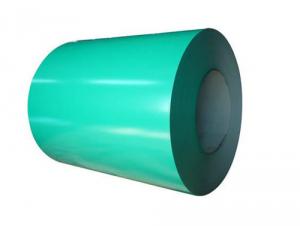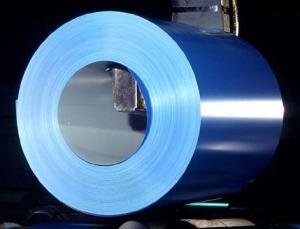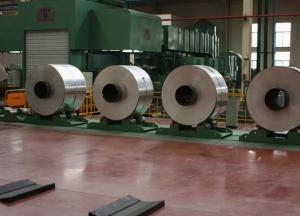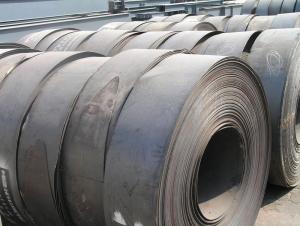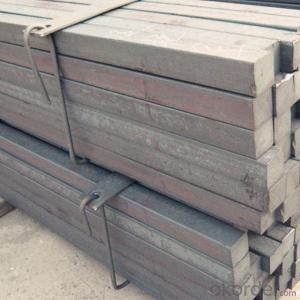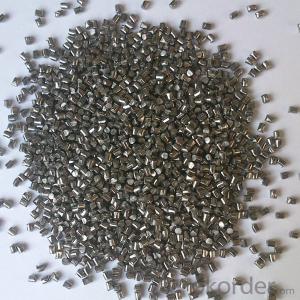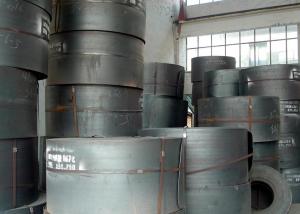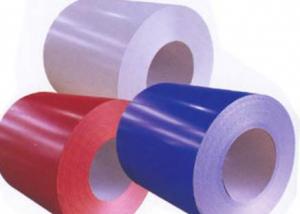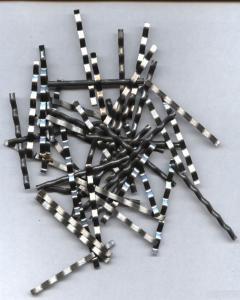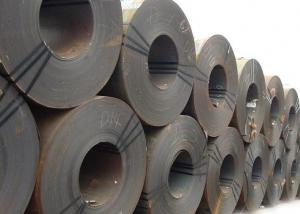PPGI Applications of Prepainted Galvanized SteelCoil
- Loading Port:
- Tianjin
- Payment Terms:
- TT OR LC
- Min Order Qty:
- 3232 m.t.
- Supply Capability:
- 32342 m.t./month
OKorder Service Pledge
OKorder Financial Service
You Might Also Like
1.Structure of Prepainted Galvanized steel Coil :
With Gi as base metal,after pretreatmet (degrease and chemical treatment) and liquid dope with several Layers of color,then after firing and cooling,finally the plate steel is called pre-painted galvanized steel ( PPGI) .Pre-painted galvanized steel is good capable of decoration ,molding,corrosion resistance
2.Main Features of Prepainted Galvanized steel Coil:
• Excellent process capability
• Smooth and flat surface
• Workability, durability
• Excellent heat resistance performance
• High strength
• Good formability
• Good visual effect
3.Prepainted Galvanized steel Coil Images

4.Prepainted Galvanized steel Coil Specification
Standard:ASTM, GB,JIS,JIS G3302 ASTM 755 EN10169
Grade: DX51D CGCC CS
Thickness: 0.13mm~3.0mm,
Width: 1250,600-1250mm
Coil weight:3-12 MT
Coil ID:508/610mm
Chemical composition:
Thickness | 0.16mm-1.6mm |
Width | 600mm-1250mm,or customized |
Coil ID | 508mm/610mm |
Zinc-Coating | 60-275g/m2 |
Grade | Q195-Q235 and SPCC,SPCD,SPCE,SGCC(DX51D+Z),SGCD(DX52D+Z),ETC |
Coil Weight | Customized |
Color | RAL number or sample color |
Standard | JIS G3302,JIS G3312,ASTM A653M/A924M 1998 |
Capacity | about 15,000 tons per month for coil product |
Surface structure | Galvanized,Zero spangle,regular spangle or normal spangle |
Coating | Topside:5micron primer+15-20microns polyester |
Backside:5-8micron primer epoxy | |
Surface treatment:chromated,oiled, non-oiled |
5.FAQ of Prepainted Galvanized steel Coi
We have organized several common questions for our clients,may help you sincerely:
1.How do you control your quality
We have established the international advanced quality management system,every link from raw material to final product we have strict quality test;We resolutely put an end to unqualified products flowing into the market. At the same time, we will provide necessary follow-up service assurance.
2.how long we will receive the goods ?
After receiving your deposit or workable lc ,our normal shipment date is 15-20days,and it takes around 28 days to reach your port of destination. But is up to different destination
3. what is your moq
Normally our moq is 25per size ,but it is up to different size
- Q:What are the different types of steel shelving and storage systems available?
- There are several different types of steel shelving and storage systems available, including boltless shelving, wire shelving, pallet racking, cantilever racking, and mezzanine systems. Boltless shelving is easy to assemble and adjust, making it versatile and suitable for various storage needs. Wire shelving is durable and allows for better airflow and visibility, making it popular for use in retail and food storage. Pallet racking is designed to store palletized goods and is commonly used in warehouses and distribution centers. Cantilever racking is ideal for storing long and bulky items such as pipes or lumber. Mezzanine systems create additional floor space by utilizing the vertical height of a facility. These different types of steel shelving and storage systems offer various benefits and can be tailored to suit specific storage requirements.
- Q:How do steel products contribute to the construction of theaters and concert halls?
- Steel products contribute to the construction of theaters and concert halls in various ways. Firstly, steel is commonly used for the structural framework of these buildings, providing strength, stability, and the ability to span large distances. Additionally, steel is used for roofing, cladding, and facade systems, offering durability and aesthetic appeal. Steel is also utilized in the construction of balconies, stairs, and seating structures, ensuring safety and comfort for the audience. Overall, steel products play a crucial role in creating modern, functional, and visually appealing theaters and concert halls.
- Q:How are steel profiles used in the fabrication of conveyor systems?
- Steel profiles are commonly used in the fabrication of conveyor systems as they provide strength, durability, and versatility. These profiles are used to construct the framework, support structure, and various components of the conveyor system, such as the conveyor belt, rollers, and guides. The steel profiles are carefully designed and fabricated to ensure the conveyor system can handle the required load capacity and operate smoothly. Additionally, steel profiles can be easily customized and assembled to meet specific conveyor system requirements, making them an ideal choice for efficient and reliable material handling.
- Q:What are the different grades of tool steel and their applications?
- Tool steel is a type of high-quality carbon or alloy steel that is specifically designed for use in the manufacturing of tools and machinery parts. There are several different grades of tool steel, each with its own unique properties and applications. Some common grades include: 1. O-1 Tool Steel: This grade is known for its excellent hardness, wear resistance, and toughness. It is commonly used in making cutting tools, punches, and dies. 2. A-2 Tool Steel: A-2 grade offers good wear resistance and machinability. It is often used in applications requiring high production rates and precision, such as forming dies and precision measuring tools. 3. D-2 Tool Steel: D-2 grade is a high-carbon, high-chromium, and high-molybdenum steel. It exhibits excellent wear resistance and can retain its hardness even at high temperatures. It is widely used in making cutting tools, shear blades, and cold work punches. 4. H-13 Tool Steel: H-13 grade is a hot work tool steel with excellent heat resistance and high toughness. It is commonly used in applications that involve high temperatures, such as die casting, extrusion, and hot forging. 5. M-2 Tool Steel: M-2 grade is a high-speed tool steel known for its exceptional hardness and heat resistance. It is commonly used in making drills, reamers, and other cutting tools that require high-speed machining. These grades are just a few examples, and there are many other tool steel grades available, each suited for specific applications. The choice of grade depends on factors such as the desired hardness, wear resistance, toughness, and the specific tool or part being manufactured.
- Q:How is steel used in the manufacturing of water treatment systems?
- Steel is commonly used in the manufacturing of water treatment systems due to its durability, strength, and resistance to corrosion. It is used to construct various components, such as tanks, pipes, and frames, ensuring the system can withstand high pressures and harsh environments. Additionally, steel is easy to clean and maintain, making it an ideal material for water treatment systems that require regular disinfection and maintenance.
- Q:How are steel bars used in the reinforcement of bridges and flyovers?
- Steel bars are used in the reinforcement of bridges and flyovers to enhance their structural integrity and strength. These bars, also known as rebars, are embedded within the concrete to provide tensile strength and resist the forces exerted on the structures. By reinforcing the concrete, steel bars help distribute the load more efficiently, preventing the bridge or flyover from collapsing under heavy traffic or external forces.
- Q:How are steel pipes used in the transportation of chemicals?
- Steel pipes are commonly used in the transportation of chemicals due to their strength, durability, and resistance to corrosion. These pipes are used to safely transport various types of chemicals, such as acids, solvents, and corrosive substances, from one location to another. The steel material provides a reliable and secure conduit for the chemicals, preventing leaks or contamination during transit. Additionally, steel pipes can withstand high pressure, making them suitable for transporting chemicals over long distances.
- Q:How are steel products used in the automotive industry?
- Steel products are widely used in the automotive industry for various applications, including the manufacturing of car bodies, frames, and structural components. Steel's high strength-to-weight ratio and durability make it an ideal material for ensuring the safety and structural integrity of vehicles. Additionally, steel is used in the production of engine parts, suspension systems, and exhaust systems due to its heat resistance and ability to withstand high temperatures.
- Q:What are the properties of galvanized steel for outdoor applications?
- Galvanized steel is known for its excellent corrosion resistance, making it highly suitable for outdoor applications. Its protective zinc coating forms a barrier between the steel and the elements, preventing rust and corrosion from forming. This coating also provides a durable and long-lasting finish, ensuring that galvanized steel can withstand exposure to harsh weather conditions, moisture, and UV rays. Additionally, galvanized steel is known for its strength and toughness, making it a reliable choice for outdoor structures, fences, roofing, and other applications where durability is essential.
- Q:What are the applications of steel in the wastewater treatment industry?
- Steel is widely used in the wastewater treatment industry for various applications. It is commonly used in the construction of wastewater treatment plants, including the fabrication of tanks, pipes, and other infrastructure. Steel's durability and strength make it suitable for handling the corrosive nature of wastewater and the high-pressure conditions in treatment processes. Additionally, steel is often used in the manufacturing of equipment such as pumps, screens, and valves due to its resistance to corrosion and ability to withstand harsh operating conditions. Overall, steel plays a crucial role in ensuring the efficiency and longevity of wastewater treatment facilities.
1. Manufacturer Overview |
|
|---|---|
| Location | |
| Year Established | |
| Annual Output Value | |
| Main Markets | |
| Company Certifications | |
2. Manufacturer Certificates |
|
|---|---|
| a) Certification Name | |
| Range | |
| Reference | |
| Validity Period | |
3. Manufacturer Capability |
|
|---|---|
| a)Trade Capacity | |
| Nearest Port | |
| Export Percentage | |
| No.of Employees in Trade Department | |
| Language Spoken: | |
| b)Factory Information | |
| Factory Size: | |
| No. of Production Lines | |
| Contract Manufacturing | |
| Product Price Range | |
Send your message to us
PPGI Applications of Prepainted Galvanized SteelCoil
- Loading Port:
- Tianjin
- Payment Terms:
- TT OR LC
- Min Order Qty:
- 3232 m.t.
- Supply Capability:
- 32342 m.t./month
OKorder Service Pledge
OKorder Financial Service
Similar products
New products
Hot products
Related keywords

